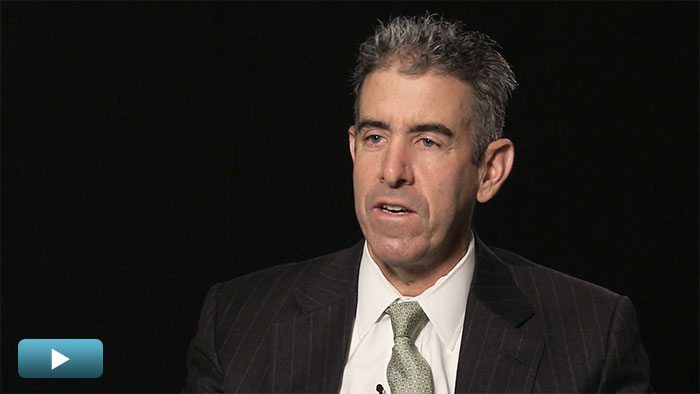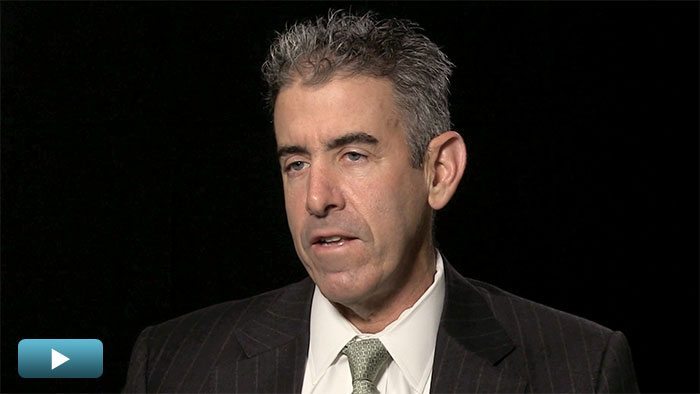Debt Funds: The Devil’s in the Details
 Funds holding top-quality commercial real estate in key markets have long been the cornerstone of private equity’s property strategy. But the prospect of owning prized towers and malls has lost some of its luster in the past year, with yields on some solid assets in core markets tightening to the point that some deals no longer stack up. So, what’s an investor to do when their investment strategy no longer makes sense? In 2013, many LPs made the decision to diversify their exposure to the property sector and put some cash into real estate debt funds, which diminishing returns on equity investments made look a lot more tempting, in terms of risk-adjusted returns. The result has been a sharp turnaround in the level of investment in debt funds, with giants like Blackstone Group, Pramerica Real Estate and Axa Real Estate raising funds in 2013. The volume of cash raised for debt funds almost doubled from 2012 to 2013, with $10.7 billion raised by 21 vehicles, according to Preqin figures. This trumped the $10.6 billion raised in 2008, but fell short of the $14.8 billion raised by 40 funds in 2006. The benefits of LPs’ entry into the market, through debt funds, a few years back are apparent for both the borrower and lender. Borrowers can access debt at a time when traditional lenders have backed away from property after a few stomach-churning years, and CMBS issuances have become scarce, while lenders can get more bang for their buck than making an equity investment. Preqin head of real estate assets Andrew Moylan says as bank lenders moved away from property lending, non-traditional lenders embraced the opportunity as part of their investment strategy, stepping in to breach the gap. “Prior to 2008, 2009, debt as a strategy for some of the fund managers barely existed aside from a handful of players,” he says. Investors were putting money into vehicles across the risk spectrum, from senior loans to lower-grade debt, Moylan says, after initially focusing on mezzanine loans. However, with banks making a return to real estate lending, the role for debt funds in the coming years was unclear, Moylan says. He saw 2014 as another year of strong demand for debt funds but did not see room for further strong growth this year. Pension Consulting Alliance Managing Director David Glickman did not expect the return of the major banks to threaten the position of debt funds in the near term. He says those which were making the move back to property lending were still targeting assets that were conservatively underwritten, leaving opportunities to lend on assets that were less so.
Funds holding top-quality commercial real estate in key markets have long been the cornerstone of private equity’s property strategy. But the prospect of owning prized towers and malls has lost some of its luster in the past year, with yields on some solid assets in core markets tightening to the point that some deals no longer stack up. So, what’s an investor to do when their investment strategy no longer makes sense? In 2013, many LPs made the decision to diversify their exposure to the property sector and put some cash into real estate debt funds, which diminishing returns on equity investments made look a lot more tempting, in terms of risk-adjusted returns. The result has been a sharp turnaround in the level of investment in debt funds, with giants like Blackstone Group, Pramerica Real Estate and Axa Real Estate raising funds in 2013. The volume of cash raised for debt funds almost doubled from 2012 to 2013, with $10.7 billion raised by 21 vehicles, according to Preqin figures. This trumped the $10.6 billion raised in 2008, but fell short of the $14.8 billion raised by 40 funds in 2006. The benefits of LPs’ entry into the market, through debt funds, a few years back are apparent for both the borrower and lender. Borrowers can access debt at a time when traditional lenders have backed away from property after a few stomach-churning years, and CMBS issuances have become scarce, while lenders can get more bang for their buck than making an equity investment. Preqin head of real estate assets Andrew Moylan says as bank lenders moved away from property lending, non-traditional lenders embraced the opportunity as part of their investment strategy, stepping in to breach the gap. “Prior to 2008, 2009, debt as a strategy for some of the fund managers barely existed aside from a handful of players,” he says. Investors were putting money into vehicles across the risk spectrum, from senior loans to lower-grade debt, Moylan says, after initially focusing on mezzanine loans. However, with banks making a return to real estate lending, the role for debt funds in the coming years was unclear, Moylan says. He saw 2014 as another year of strong demand for debt funds but did not see room for further strong growth this year. Pension Consulting Alliance Managing Director David Glickman did not expect the return of the major banks to threaten the position of debt funds in the near term. He says those which were making the move back to property lending were still targeting assets that were conservatively underwritten, leaving opportunities to lend on assets that were less so.  Talmage Chief Executive Officer Ed Shugrue was bullish about the market’s prospects. He says the outlook for real estate debt funds for the coming five years was solid, with a staggering amount of debt to be refinanced. The U.S. CMBS market was about $600 billion, with $400 billion of that to be refinanced in the coming four years, after aggressive underwriting in 2006 and 2007, Shugrue says. “That, in our view, keeps a tamper on the recovery, which, from an investment side, is wonderful,” he says, noting that much of the debt was overleveraged and had run out of extension options. Shugrue says more “nontraditional money” had come into the real estate debt space following the financial crisis, in the form of “hot money” or hedge funds, but many of those buyers left the space as it shifted from a “generalist commodity business to a sharpshooters business.” Connecticut-based Cornerstone Real Estate Investors’ CIO of Finance Rob Little says Cornerstone had its eyes firmly on the high volume of CMBS maturities in the U.S. in 2016 and 2017. However, more immediately, there were opportunities in Europe, particularly in the hospitality sector.
Talmage Chief Executive Officer Ed Shugrue was bullish about the market’s prospects. He says the outlook for real estate debt funds for the coming five years was solid, with a staggering amount of debt to be refinanced. The U.S. CMBS market was about $600 billion, with $400 billion of that to be refinanced in the coming four years, after aggressive underwriting in 2006 and 2007, Shugrue says. “That, in our view, keeps a tamper on the recovery, which, from an investment side, is wonderful,” he says, noting that much of the debt was overleveraged and had run out of extension options. Shugrue says more “nontraditional money” had come into the real estate debt space following the financial crisis, in the form of “hot money” or hedge funds, but many of those buyers left the space as it shifted from a “generalist commodity business to a sharpshooters business.” Connecticut-based Cornerstone Real Estate Investors’ CIO of Finance Rob Little says Cornerstone had its eyes firmly on the high volume of CMBS maturities in the U.S. in 2016 and 2017. However, more immediately, there were opportunities in Europe, particularly in the hospitality sector.
The European Opportunity
In 2014, investors are expected to continue focusing on Europe, where big banks have yet to step back into the market, leaving a raft of opportunities for private lenders. Already in 2014, UBS Global Asset Management and Mitsubishi Corp. have announced they will join as co-GPs, backed by a major European pension fund, to raise a £500 million debt vehicle targeting the UK market. Charles Daulon du Laurens, AXA Real Estate’s Head of Investor Relations-Real Asset Finance, says in their European debt investments, North American banks have so far focused on the U.K. property market (where there was no language barrier and regulations were similar to their home market), rather than on France and Germany. Some European banks have already restarted their real estate lending programs, joining German banks that have access to the Pfandbrief market and have never stopped their property lending. Daulon du Laurens felt the ECB would be more closely scrutinizing the region’s banks in the coming year, encouraging them to strengthen their capital, which may prevent them from loaning more money. Demand for loans in 2014 is expected to continue at 2013 levels, he says, but strong growth in the number of North American lenders entering Europe this year is not expected, given the amount of money they committed to the region in 2013, causing margins to tighten. “I wouldn’t expect any more competition from such lenders in Europe,” he says. Jeff Friedman of Mesa West, which raised the fifth largest real estate debt fund during 2013, with its $752 million Real Estate Income Fund III, was more optimistic, noting that the “European lenders are virtually gone.” His firm originated about $1 billion in loans in 2013, up from about $650 million in 2012. Between 2005 and 2007, there was a lot of deal flow but also a lot of competition, as debt became “sexy”, Friedman says, so the firm originated only about $500 million a year. “Irish banks were in, German banks, French banks, everyone who had an interest in lending a dollar could lend a dollar,” he says. “By rough math it’s twice as good as it was back then.” Chris Bates, head of Cornerstone’s European debt business, said the traditional lenders who were still lending in Europe tended to misprice deals, after being burned during the previous cycle. “It is dangerous to bracket Europe as one market,” he says, noting a particular difference between regulation in the northern and southern countries.
Letting the Right One In
While the opportunity is apparent, debt strategies can be risky, particularly as investors move into higher-yielding vehicles. If a debt fund goes well, all investors stand to win is their investment back, with interest. If it goes wrong, there is much more to lose. This means it is almost impossible for several successful debt deals in a fund’s portfolio to shield investors from the impact of a bad one. In a portfolio of equity investments, even one outstanding investment can help negate the effect of deals gone wrong. “Being a lender is the equivalent of being a team that has no hitting. The pitching needs to be really good and make very few mistakes, because if you get down by a couple runs you can’t make it up on the next one,” Friedman says. So it is crucial that LPs entrust the right manager with their debt investments. Probitas Partners’ Michael Hoffman says that many managers in this space were either debt specialists or real estate specialists but few had experience on both fronts. LPs had to look for a sophisticated operator who had the capacity to operate assets, should they engage in a “loan-to-own” strategy, otherwise they were unlikely to fully capitalize on the asset’s value. “Many LPs are justifiably suspect” regarding fund managers’ ability to both manage the debt and assets, Hoffman says. ![]()
LPs regained their appetite for debt funds in 2013. The outlook for the market remains strong. But the funds are not without risk.


